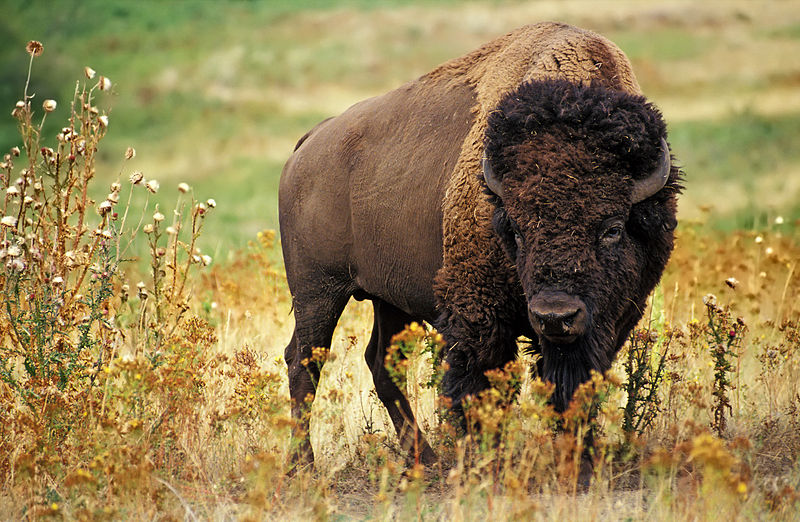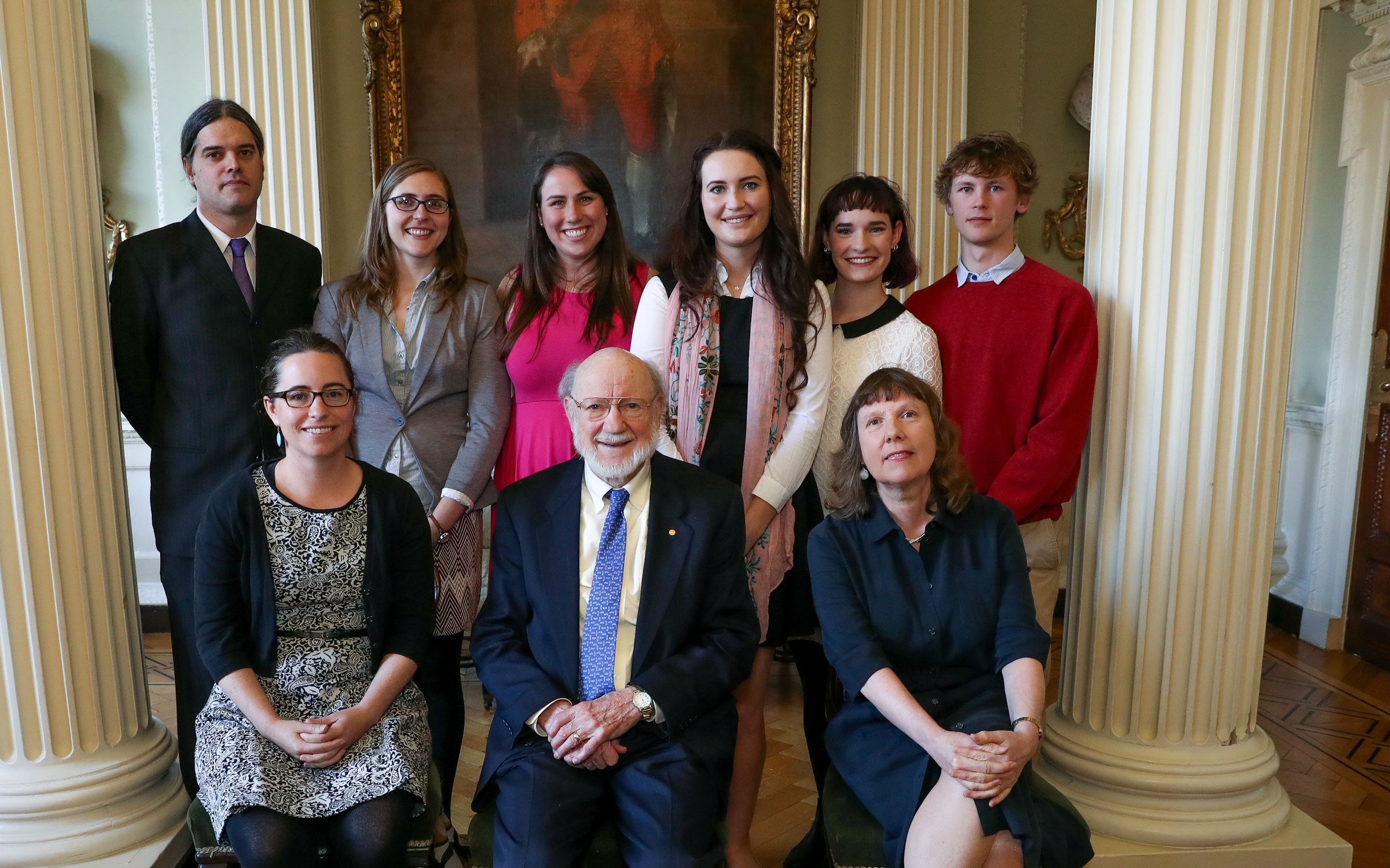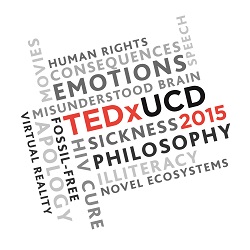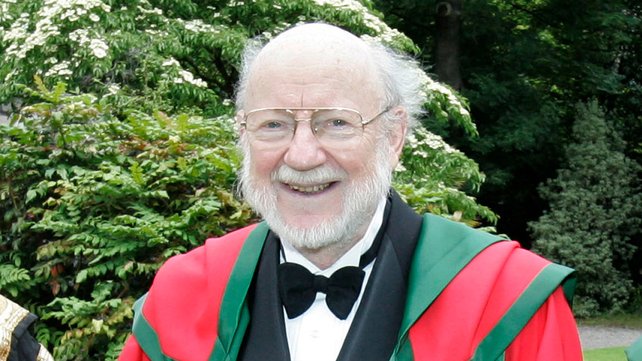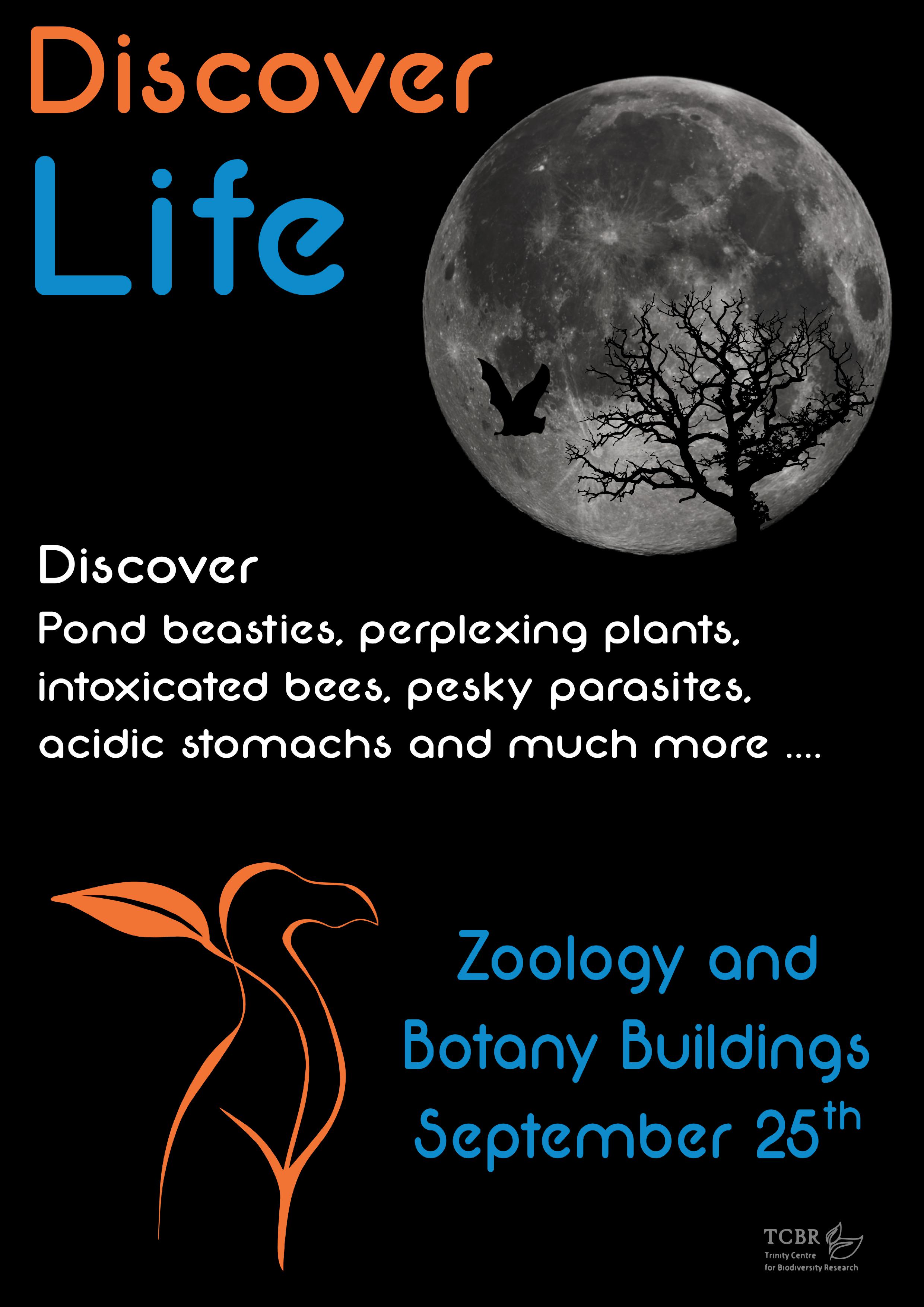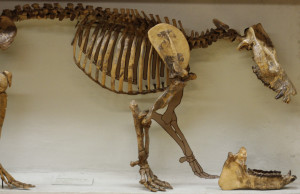In 1872 Yellowstone National Park was established as the first National Park not only in the USA, but in the world. President Ulysses S. Grant signed into law the Yellowstone National Park Protection Act, and so the National Parks were born. Today 59 National Parks exist throughout the United States, covering approximately 51.9 million acres with the goal of maintaining in perpetuity both wildlife and their habitat. Since 1916 the National Park Service (NPS) has been entrusted with the care of these National Parks, and this year they celebrate their centenary. Continue reading “Trump and the future of “America’s best idea.””
Studying worms – a Nobel calling
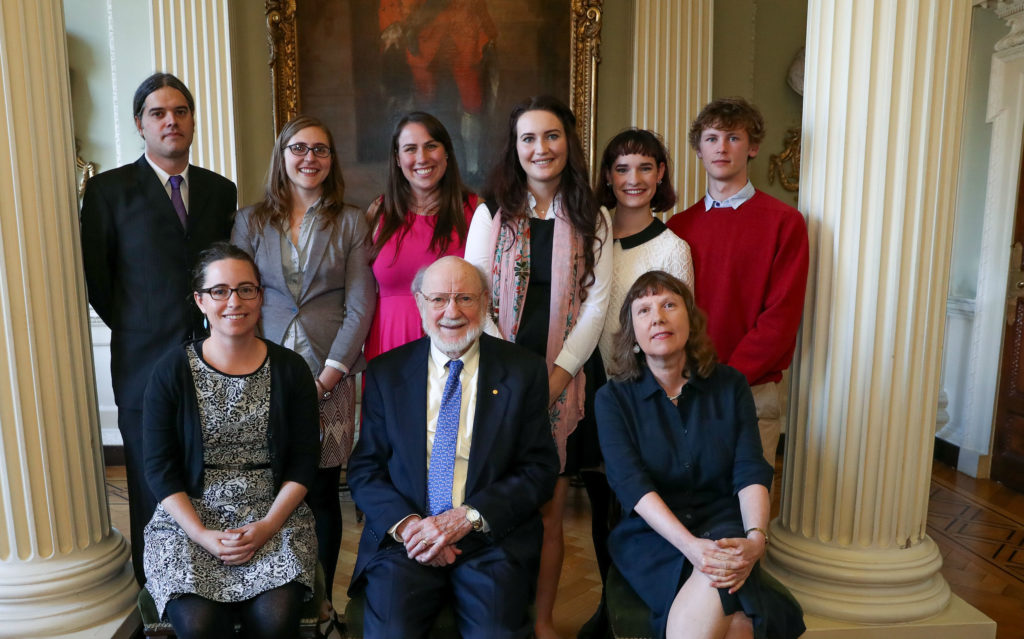
“Parasites are not generally regarded as being loveable. When we refer to people as parasites we are not being complimentary, we are not praising them. We tend to think that a parasite is the sort of person who goes through a revolving door on somebody else’s push. This is unfair. It’s unfair to real parasites… It is time for parasites to get a little more respect!” – Professor William C. Campbell during his 2015 Nobel Prize acceptance speech.
In 2015, Prof. William C. Campbell, a Trinity Zoology graduate, won the Nobel Prize in Physiology or Medicine, for his discovery of ivermectin. The drug can be used to treat a wide range of parasites, but is most widely known for its effectiveness against river blindness. In 1987 the pharmaceutical company Merck enabled the free distribution of the drug to developing countries.
This Nobel Prize, which Prof. Campbell shared with his then colleague Prof. Satoshi Ōmura, is an important accomplishment not only for the Professors themselves as the cherry on top of their careers, but it is also important for the wider academic community.
This Nobel Prize is of importance to what Prof. Celia Holland described as ‘the international worm community’. This community has been struggling for many years to get recognition and funding. This prize therefore finally highlights the importance of parasitic worms. A lot of these parasites are often, despite their wide prevalence, classified as ‘neglected tropical diseases’. Neglected tropical diseases mainly affect the poor communities and are often forgotten in research and in the ‘public health agenda’. It remains to be seen whether some parasites will ever be able to shake their neglected status, but this Nobel Prize and associated international attention could be a great step in the right direction.
Hopefully, other pharmaceutical companies will take note of this prize. Giving away lifesaving medicine should be celebrated. We all know of the negative press pharmaceutical companies have gotten such as the recent price hikes in epi-pens. However, we tend to forget and ignore when pharmaceutical companies go to great lengths to help those in need. I see this prize also as a celebration of Merck for showing how it can be done differently. Because, really, what is the point of us producing any medical research if it doesn’t translate into affordable medicine?
During Prof. Campbell’s visit to TCD, the provost announced a new lectureship position in parasitology in honour of Prof. Campbell and the work he has done for the international worm community. Needless to say that this position would not have existed without Prof. Campbell’s Nobel Prize. Parasitology is a struggling field worldwide and every lectureship position is one to be valued and celebrated. This lectureship shows the commitment of the university to parasitology and will reinforce Trinity’s leading role in parasitological research within Ireland.
Additionally, this is an inspirational story for a lot of people. The story of ivermectin is a great motivation for parasitologists like myself. I work on a parasitic nematode called Ascaris, which infects 800 million people worldwide every year. Much like river blindness, it is also a neglected tropical disease, and as is often the case for these types of diseases, there isn’t much interest or funding going around. So it’s great at the start of my PhD to see that this type of research can also be honoured and valued.
I’ve read interviews of Prof. Campbell where he said that this prize meant the end of his retirement. I’m sorry to hear that his well-deserved retirement has been shaken up, but Prof. Campbell took one for the team and is promoting parasitic worm research to whoever wants to listen, just as he did before, only now he has a broader audience.
Author: Gwen Deslyper (seen charming Bill at 1:49 )
Listening to Evolutionary Oddities @TEDxUCD
Last December I was asked to participate in the TEDxUCD 2015 event. The event included 9 national and international speakers with a wide range of ideas worth spreading. Despite being asked to participate only two days prior to the event luckily I could draw on the wide research area encompassed in my new Post Doc position using the COMPADRE and COMADRE databases to study patterns in demography and life-history evolution in plant and animals. As I couldn’t possible fit all the ideas worth sharing from the fields of demography and life-history evolution into an eleven-minute entertainment talk I focused on research related to the variation of maximum lifespan across vertebrates. In particular, I discussed research originating from my PhD on trying to understand why some species seem to live far longer than we would normally expect and how their ecology may be related to this (http://rspb.royalsocietypublishing.org/content/281/1784/20140298).
My approach is that it is the species that are found at the extremes of nature that can often be the most informative. Whales tell us about the limits of size, cheetahs the limits of speed and ants the power of cooperative behavior. However, it is not always the Guinness book of record style species that are the most interesting, for when it comes to understanding aging it is oddball creatures such as the bats and the naked mole rat that are the unsightly stars of many aging studies. The reason for this interest is because these animals seem to have the inside scoop on the elixir of youth with both bats (>40 years max) and naked mole rats (>30 years max) living an order of magnitude longer than expected for their size.
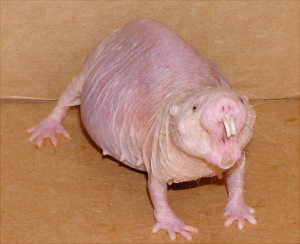
Despite this we still have little idea of not just how, but why these species have such life-history strategies. This is important not simple with regards to understanding life-history evolution, but because researchers are beginning to target species and genes with potential links to the abilities that keep aging at bay. For example, the extreme lifespan of naked mole rats has been touted as being the result of the reduced danger associated with its subterranean lifestyle. This has led researches to target species and genes associated with with living underground, such as genes related to their stretchy skin, as these are to thought to be themselves linked with reducing sources of age related mortality such as cancers. However, the role of subterranean living in increasing lifespan is still debated, leaving such a targeted approach in danger of missing the mark in other scenarios.
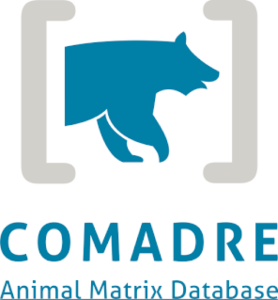
My idea worth sharing is that we should not just find these unusual species but also understand what evolutionary and ecological drivers shaped these species. With the help of more detailed datasets like COMADRE and COMPADRE we can begin to understand the evolutionary and ecological drivers that lead to species at the extremes of life history evolution. We should aim to not just know who the oddball stars of life-history studies should be, but why they really are stars.
Author: Kevin Healy
Contact: @healyke
Blog Roll #1
Interested in keeping up with developments in the world of Ecology and Evolution? Well then, you’ve come to the right place!
Welcome to BlogRoll, EcoEvo’s fortnightly news and views roundup. Every two weeks, we will present a collections of some of the stories and papers that have caught our eye.
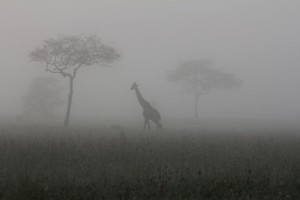
In parasitology, a study which was published in Science has found that women infected with the roundworm Ascaris lumbricoides over their lifetime gave birth to two extra children on average, suggesting the worm altered the immune system in such a way as to make it easier to have children. The 9 year study of 986 indigenous women in Bolivia also found that presence of the hookworm has the opposite effect on the women. Full story via the BBC.
The hills are alive….
The role of ecosystems in popular culture is hard to dispute, with the natural providing the inspiration for countless artworks and songs. A paper released last week in Ecosystem Services by our own Luca Corsieme has quantified the role of ecological references in music. He assessed the inspirational value of ecosystems in popular music in economic terms. He found that 1.4 million songs are inspired by ecosystems, generating a total value of $600 million from 2003 to 2014. This story has received much media interest, with articles covering Luca’s work appearing in The Irish Times, The Irish Independent, Big News Network, and The Daily Express.
Can stress levels dictate rates of evolution?
In a great piece in the Atlantic, Ed Yong describes a study published in Proceedings B that describes how the levels Heat shock protein 90 (HSP90) changes during times of stress. By placing a group of Beetles among wounded peers, it was found that HSP90 was suppressed during times of stress, allowing for greater evolution rates. This finding is particularly interesting as benefits of such as mutation cannot be experienced by the individual, but by the offspring that are produced thereafter, increases their chances of dealing with the challenge at hand. This study raises interesting questions regarding the relationship between the robustness and plasticity of evolutionary adaptations.
Much needed advance against killer fungal disease:
A paper released last week in Biology Letters brought great news to the world of herpetology as Midwife toads on the Spanish island of Mallorca have been declared free of the chytrid fungus Batrachochytrium dendrobatidis. In a report in Nature News, Jaime Bosch, an evolutionary biologist at Spain’s National Museum of Natural History in Madrid, outlined how the result of a 6-year study was carried out using a combination of anti-fungal drugs and by cleansing the ponds in which tadpoles grow. The simplicity of the techniques used brings great promise to the fight against this lethal disease.
Also in herpetology, a paper in Nature Communications Gecko’s amazing wall-walking talent is all in the genes.
Other good reads:
- A paper released this week in Nature Genetics describes how “A ‘supergene’ turns these male birds into female impersonators or sneaky mate thieves — for life” story via the Washington Post.
- After a Mass extinction, only the small survive. Following an extinction event, such as that during the late Devonian, it takes much longer for an ecosystem to become populated with larger animals. This story in the New York Times describes a paper published in Science on November 13th.
- Our Golden Eagles are at risk of Starving and Extinction. This story in The Irish Times is calling upon Minister for Agriculture Simon Coveney to introduce measures to improve conditions in Donegal’s highlands to safeguard the future of Ireland’s Golden Eagle population.
- Pigeons are surprisingly good at detecting tumours. This paper published this week in PLoS ONE reports how Richard Levenson of the University of California, Davis Medical Center and colleagues trained pigeons to recognize images of human breast cancers. In tests, the birds proved capable of sorting images of benign and malignant tumors.
- In an eye-catching paper, a team of researchers from University of California at Santa Barbara and the Massachusetts Institute of Technology have found that chitons, a type of mollusc have eyes made of aragonite. The use of a mineral over organic material allows these chitons to use their eyes as a form of defense. Full story in The Atlantic
And finally…
Army ants have been shown to dynamically adjust the structure of their living bridges (i.e. bridges of ants) according to an algorithm designed to optimise their cost-benefit trade-off. A paper in PNAS details how the ants will collectively bridge gaps in their supply route to optimise the amount of food being brought to the colony. This alone is nothing new. The intriguing aspect of this behaviour is how the ants will; then move their bridge, with the help of additional drones to increase the span, hence creating super-highways for other members of the colony. This piece in the Smithsonian has the full story.
If we’ve missed anything, or you’d like to contribute to our next blogroll, drop us a line at ecoevoblog[at]gmail[dot]com
author: Dermott McMorrough, @derm_mcm
A Nobel Pursuit
Splitting the atom, unlocking the secrets of radiation, or even leading a peaceful civil rights movement.
I grew up knowing that these were the sorts of achievements that earn you a gold medal and an invitation to Sweden in mid-December. I have since learned that the annual ceremony held in honour of Alfred Nobel hasn’t always been awarded to the most deserving candidate, and that sometimes the winners simply stumbled upon a discovery that changed the world. This was not the case with the 2015 Nobel prize for Physiology and Medicine. Continue reading “A Nobel Pursuit”
Back to School.
Welcome back everyone.
As the dusts settles on a hectic first couple of weeks, we finally have a chance to welcome everyone back from the much needed summer break (for those who got one).
We started this week with the exciting news that an alumnus of TCD Zoology, Dr William (Bill) Campbell has been awarded the Nobel prize for physiology and medicine with Satoshi Omura “for their discoveries concerning a novel therapy against infections caused by roundworm parasites”. Dr Campbell joins Dr Ernest Walton and Samuel Beckett as graduates of Trinity College Dublin to win the award. Obviously, exciting news such as this deserves its own blog post, so watch this space.
Tuesday brought with it the first Nerd Club of the year, as our research and teaching staff got together to plan the year of workshops, talks and presentations to keep us ticking over until May. As each week will cover different topics of interest to our readers, we’ll endeavour to write short openness to summarise the results of our discussions.
The Michelmas term brings with it the commencement of undergraduate teaching, and we are delighted to welcome back our returning Senior Sophistors, as well as our new crop of Junior Sophs, fresh from their marine field ecology trip to Portaferry.
ZooSoc has hit the ground running for the 42nd session, with dozens of events planned for the coming months under the guidance of Fionn Ó Marcaigh and his dedicated committee. Keep an eye on their Facebook, and twitter for details.
For regular news updates form the department of Zoology, be sure to check out Zoobytes on Facebook.
If you would like to contribute to the EcoEvo Blog, please send us an email at ecoevoblog[at]gmail.com
author: Dermott McMorrough, twitter: @derm_mcm, email: mcmorrd[at]tcd.ie
Discover Life – Friday 25th September 2015
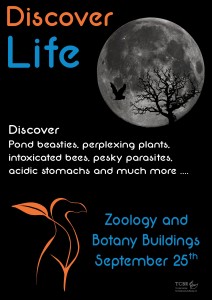 On Friday September 25, the School of Natural Sciences and Trinity Centre for Biodiversity Research will present Discover Life! in the Zoology and Botany buildings at Trinity College Dublin.
On Friday September 25, the School of Natural Sciences and Trinity Centre for Biodiversity Research will present Discover Life! in the Zoology and Botany buildings at Trinity College Dublin.
Come and see how researchers are trying to solve some of the world’s most pressing problems and get a highlight of a large variety of internationally recognized research projects!
In the Botany Department ask us about how we are trying to fight biodiversity loss, search for new species and reduce future world hunger. Check out what bees and pond beasties look like up close; find out what happens in a Herbarium; taste some honey; see a wetland in a box; become a pollinator-friendly gardener or even a citizen scientist!
In the Zoology Department, ask us about how we track the famously evasive badger; where plants and animals survive in harsh environments and find the most suitable places to live. Learn how much of the Sun’s energy is captured by living things on Earth; why babies kick in the womb; and why our stomach acid is stronger than car battery acid? Discover how parasites can change how animals think and how some chemicals can make some animals change sex. Researchers will be there to guide you to examine closely some of the most amazing creatures on the Planet in the Museum of Zoology.
All these, and more exciting projects help us understand better how Life makes it on Earth, and how humans could better protect this wonderful living heritage.
Discover Life is just one part of Discover Research Dublin, an annual event funded by the the EU under the Horizon 2020 framework as part of European Researchers Night. This takes place on the last Friday of every September. On this night, Trinity College Dublin invites the general public to the campus to take part in tours, talks, demos and chats. This year’s main themes are Human, Tech, World and Society. Please click through to learn more about each one.
The event is FREE to attend and the Botany and Zoology buildings will be open from 6pm-10pm with the last entry at 9.30pm.
Authors: Anna M Csergo, @csergoa and Eileen Power @POWEREI
Image: Kevin Healy, @healyke
The Skeleton in the Closet
After a few ups and downs, everything you always wanted to know about the effect of missing data on recovering topology using a Total Evidence approach is now available online (Open Access)!
This paper also treats many different questions that people might be interested in (Bayesian vs. ML; how to compare tree topologies; comparing entire distributions, not only their means and variance; and many more!) but I’ll leave it to you to discover it…
Back on track, more than one an a half CPU centuries of calculation ago, Natalie and myself wanted to build a Total Evidence tip-dated primates tree. The Total Evidence method is the method that allows you to combine both living and fossil species (or actually, read “both molecular and morphological data”) into the same phylogenies. The tip-dating method, is an additional method that uses the age of the tips rather than the age of the nodes for dating such a tree. But I’m not going to talk about that in this post.
At the start of the project, we were both confident about the idea behind it and that primates would be the ideal group for such work since they are so well studied. A study that I described in a former post also came out around the same time, encouraging us and comforting us in this project.
However, as you might guess, something went wrong, horribly wrong! For the Total Evidence method, we need molecular data for living species (check) morphological data for fossils species (check) and also for living species (che… No, wait)! After looking at the available data, we quickly found out that there was a crucial lack of living taxa with available morphological data (check our preprint to be submitted to Biology Letters putting the actual numbers on the problem). From that problem, rose the idea of actually testing how that would influence our analysis. And funnily enough, this problem become one of the two major parts of my PhD!
Running thorough (and loooooong) simulations, we assessed the impact of missing data on topology when using a Total Evidence method. We looked at three parameters where data would be missing:
- The first one, was obviously the one I introduced above: the number of living taxa with no available morphological data (at all!).
- The second one, was the amount of available data in the fossil record (because yes, fossils can be a bit patchy).
- And the third one, the overall amount of morphological characters.
We then compared the effect of different levels of available data for each parameter individually and and their combination on recovering the correct topology, using both Maximum Likelihood and Bayesian Inference. For the correct topology, we used the tree that had no missing data in our simulations. For each parameter combination, we measured the clades in common between the correct topology and the trees with missing data as well as the placement of wild-card taxa (typically fossils jumping everywhere).
Unsurprisingly, we found that the number of living taxa with no available morphological data was the most important parameter for recovering a good topology. In fact, once you go past 50% living taxa with no morphological data, the two other parameters have no effect at all, even if you have a perfect or a really bad fossil record or many or really few characters. This is kind of intuitive when you think about it because the only way to branch the fossils to living taxa is to use the morphological data. Therefore, if there are no morphological data for the living taxa, the fossils cannot branch with them regardless of the quality of the data. Therefore, in this paper, we argue that to improve our topologies in Total Evidence, we should visit more Natural History museums. And not only the exciting fossil collections but the well curated collections of living species as well!
All the code for this paper is available on GitHub.
Check out the latest presentation about both papers.
Paper 1: Guillerme & Cooper 2015 – Effects of missing data on topological inference using a Total Evidence approach – Molecular Phylogenetic and Evolution (doi:10.1016/j.ympev.2015.08.023).
Paper 2 (preprint): Guillerme & Cooper 2015 – Assessment of cladistic data availability for living mammals – bioRxiv ().
Author: Thomas Guillerme, guillert[at]tcd.ie, @TGuillerme
Photo credit: Thomas Guillerme (AMNH collections)
Vote for us in the blog awards!
Our blog has been shortlisted for Best Education & Science Blog at the Irish blog awards. Public votes will represent 30% of overall score for this round of judging. So please, vote here if you enjoyed reading our posts over the past year.
Author
EcoEvo@TCD
Photo credit
http://noma-cdn.s3.amazonaws.com/content/Vote_Riso.jpg

